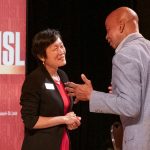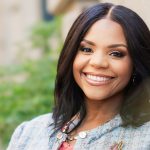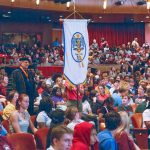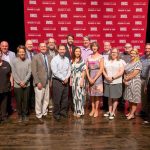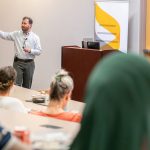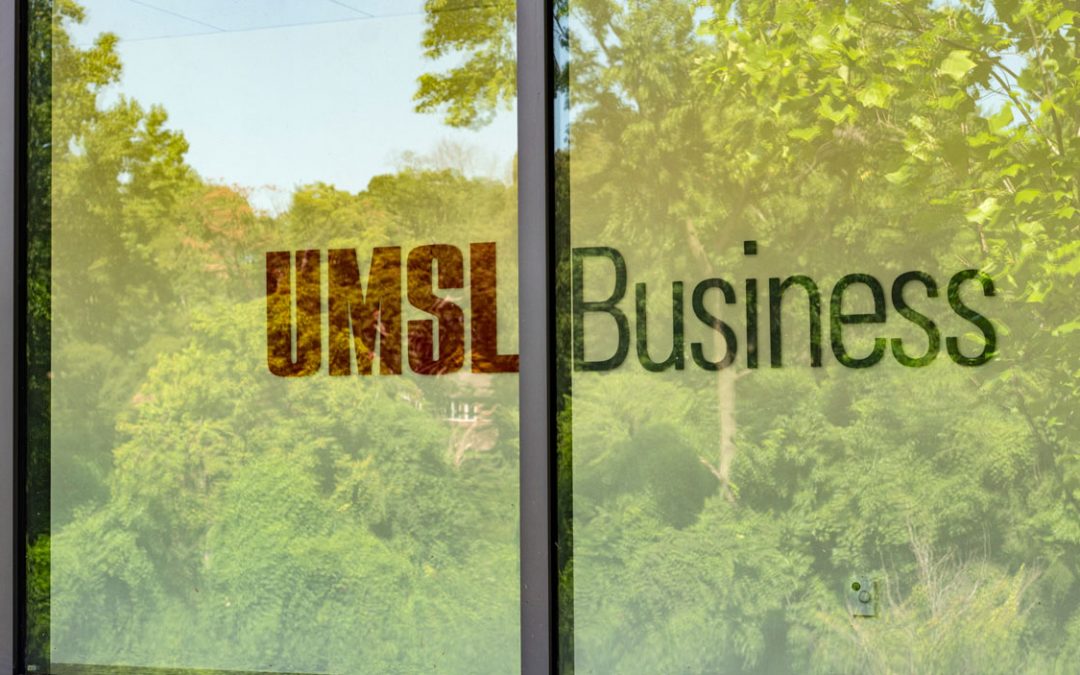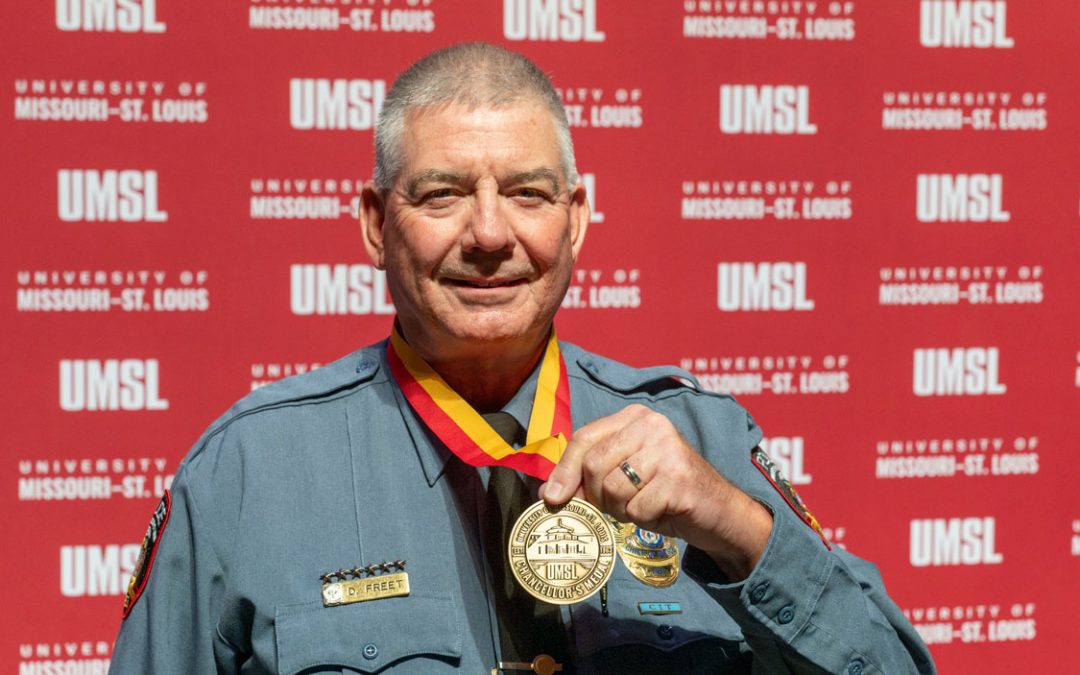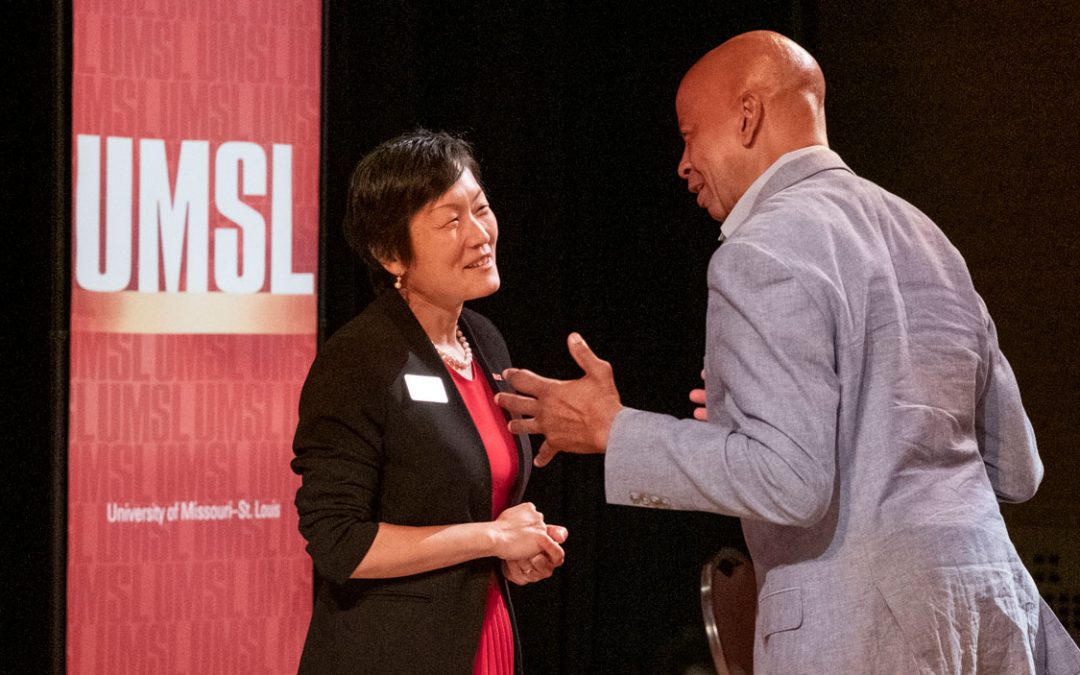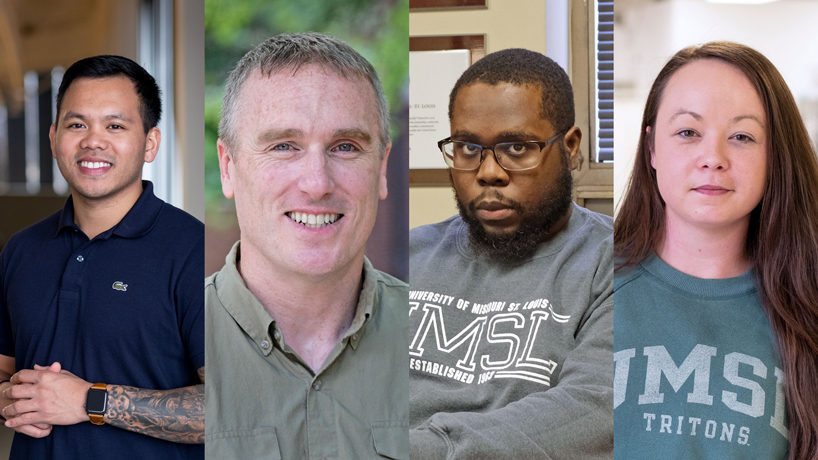
Military Times ranked UMSL first in Missouri and No. 37 nationally on its 2021 “Best for Vets: Colleges” list. It marked the seventh straight year UMSL ranked in the top 50. (Photos by August Jennewein)
The University of Missouri–St. Louis continues to excel in its support of military-connected students, helping them with their transition from service as they meet their educational goals.
Military Times ranked UMSL first in Missouri and No. 37 nationally on its 2021 “Best for Vets: Colleges” list.
The publication aims to have the largest and most comprehensive rankings of schools for military service members and veterans to help them make decisions about their education. It included 366 institutions in its 2021 rankings, which marked the seventh consecutive year that UMSL finished in the top 50.
“This recognition speaks to the fact that we understand the unique needs of student veterans and military-connected students, and we’ve been working over the last number of years to ensure that our services align with those needs,” UMSL Dean of Students D’Andre Braddix said. “You see our increased academic outcomes reflected in our current ranking. I think that’s the fruits of the labor we’ve been putting into this important student population.”
Associate Teaching Professor Jim Craig, a retired U.S. Army lieutenant colonel and now the chair of UMSL’s Department of Sociology, said UMSL’s continued high standing in the rankings hasn’t happened by accident.
He has played an integral role in building up support for the approximately 400 veteran and other military-connected students on campus – including some children and spouses of veterans receiving G.I. Bill benefits. A key moment came in 2012 with the establishment of the Veterans Center in Clark Hall, and it has developed into UMSL Veteran and Education and Transition Services.
“The first year we didn’t make the rankings, and we looked at those questions they were asking and the direction they were trying to measure, and we consciously built programs – not to match the survey but because we thought that’s where we needed to be thinking,” Craig said. “So it was intentional. We continue to be intentional about taking care of our student veterans, understanding who they are, measuring their success or not success, doing a needs assessment with them and then providing for those needs. We are doing it on purpose.”
Craig said UMSL’s administrators, starting with Chancellor Kristin Sobolik and her predecessor, Chancellor Emeritus Tom George, have been clear in their commitment to support military-connected students.
UMSL is also particularly well-suited to meet their needs because they have so much overlap with the needs of so many other UMSL students.
“I think it’s as much about what we do for vets as it is about what UMSL does for adult learning students,” Craig said. “Veterans are, if nothing else, adult learners.”
The Veterans Center provides a comfortable space to hang out and ensures that all their paperwork is in order to receive G.I. Bill benefits – a top priority for keeping students enrolled and pursuing their degrees.
Military-connected students can also find camaraderie with students with similar life experiences as they adjust to being on a college campus as well as supportive staff who can help refer them to other student services, such as those provided by Student Advocacy and Care, when needed.
“The staff are aware of the sometimes unique needs of our student veterans and military-connected students,” Braddix said. “They build that living room, if you will, for student veterans. I think the UMSL Veterans Center helps give those students that connection back to a piece of their identity, which is being a veteran.”
The Veterans Center is academically focused, and military-connected students can use it as a quiet place to study. There are computers available, and they can also access tutoring.
Ultimately, UMSL VETS works to help military-connected students engage with the broader campus as they pursue their degrees.
“The perfect model for a veteran is in the first semester or two, they spend time in the Vet Center, getting to know the university, getting comfortable with the university and how to be a college student,” Craig said. “Then they kind of disappear because they’re in the nursing club or the biology student group or they’re working on a business thing. Because they’re connected to the university. Not connected to the Veterans Center at the university, they’re actually connected to UMSL.
“We try then try to go find them when they’re seniors and bring them back, ask them to work in the Vet Center, so they can model that type of forward progress.”
It’s getting results. As Military Times noted in compiling its rankings, military-connected students – who make up about 4 percent of UMSL’s student population – are graduating at a rate within half a percentage point of the overall student population. They can take advantage of Career Services as they look to launch careers after earning their degrees.





